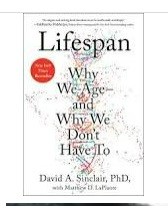
Re: a member’s post of 6/21/24
The reason many people have this perspective — that immigration is not a right — is that they are not conceptualizing “immigration” properly. They package together activities that are rights-violating with activities that are rights-respecting under the concept “immigration,” and then conclude that immigration is sometimes good and sometimes bad.
Yes, I think that the member has made the essential epistemological point: the concept of the right has to be defined properly, so that it is not seen as something from which we carve out exceptions.
One of Ayn Rand’s monumental clarifications was to distinguish initiated and retaliatory force, and to stick to it. That’s what enabled her to point to force initiation as the way rights are violated. Prior authors either lacked this distinction entirely or made it very loosely. Locke, for instance, held that the fundamental right is to “self-preservation.” But then what justifies force in self-defense? He says it’s justified because when all cannot be preserved (due to a violent conflict), morality sides with preserving the innocent. That won’t do.
In Objectivism, self-defense is validated prior to thinking about rights. It’s conceptualized as retaliatory force. The essence is this fabulous statement:
I do not grow richer by killing a holdup man.
So, we don’t conceptualize force in self-defense as an exception to rights or as something we allow to avoid being Rationalistic. The principles are contextual absolutes; the initiatory-retaliatory distinction defines that context. (Other authors had spoken of “defense” and “aggression,” but these, though roughly correct terms, do not “click in” the way “initiation” and “retaliation” do.)
In sum, the epistemological point is that we need absolute principles.
Now, the historical-political point is that there is no need to produce evidence that immigration is a right.
Every peaceful action is a right. It is those who claim immigration is not a right who have the burden of proof.
And the Founders recognized this: they did not include a Bill of Rights because they thought enumerating certain rights would imply that they had not, in the document, limited government to the protection of rights. And the part that does this reads:
[Congress shall have the power] To make all Laws which shall be necessary and proper for carrying into Execution the foregoing Powers, and all other Powers vested by this Constitution in the Government of the United States, or in any Department or Officer thereof.
It would have been clearer to say “To make all and only those laws which . . .” But, almost all of them having been trained in the law, they thought it clear that power was being granted only as far as . . . uh, . . . power was being granted.
It’s fundamentally and seriously wrong to think that individuals—a Juan, a Lars, or a Rajesh—have to find permission or authorization for immigration. No. It is the government that has to find permission or authorization to use force against any of them.
I also object to the collective approach:
Sweden is under considerable strain as a result [of its immigration policies].
Who cares about “Sweden”? Are the individuals in Sweden under considerable strain? Perhaps they are. Of what kind?
Is it economic hardship? If so, tough! As Ayn Rand pointed out in her only statement about immigration, there is no vested right to a standard of living.
Are the individual Swedes under strain by virtue of immigrants voting statist measures into law? Well, first of all, there is no need to give new immigrants the vote. Voting, I have argued, is not a right—or at least, is not a derivative of the right to life.
But more than that, isn’t the problem philosophical rather than migratory?
I don’t accept the argument, which I’m not saying anyone here was making, that immigrants drain the pool of loot that “should be” available to native-born citizens. You know the line: “They come and go on welfare, clog up the emergency wards, have kids who need public education and break the school budgets.”
Where that is true, the proper government action is not to stop them from coming but to stop them from getting the loot. (And it’s not that hard: President Clinton, of all people, got passed a 5-year no-welfare bill for all immigrants.)
All that said, I am sympathetic to the plight of Europeans who are faced with nearly overwhelming numbers of potential Muslim immigrants. But the problems can and have to be solved within the framework of the right to immigration. And the only way that can happen is if those countries drastically free up their economies, actually shrink their government spending, rather than expand it to provide free, unearned benefits for immigrants, and stop funding their altruist, collectivist, statist intellectuals.
Finally, as I said in an earlier post, if the West had a proper foreign policy, which would have prevented the 9/11 attack among other things, Islamism would have been in disrepute and not a threat.
Some readers are now thinking: “But the proper solution has been out of the question for half a century or more. Things like a proper, principled, confident foreign policy ended long ago. The anti-Western intellectuals have been in command for a long time.”
Yes, very definitely. And that’s why I’m sympathetic to the plight of the European individuals. But you can’t formulate a policy for “the right thing to do when you can’t do the right thing.”
So, our rallying cry should be: Return to capitalism and its policy of open borders.



